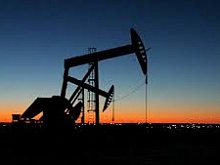Two Myths about Russia
What to keep in mind when investing in Russian equities
Myth No 1: Russia is the cheapest emerging market, and during a rally Russian equities will appreciate in price more than other comparable emerging market stocks.
This argument is typically put forward by brokers selling local shares, but don’t fall for it. Russian stocks have almost always traded at a discount. The MSCI Index has historically traded 10 to 60 percent below peers if P/E ratio is taken into account and compared to the MSCI GEM Index. The situation has reversed only on two occasions. The first was in the summer of 2002, when the promise of reform led investors to anticipate lucrative gains. The next occasion came in the second half of 2006, following the conclusion of the first Yukos trial, Rosneft’s successful IPO, and an increase in Gazprom’s weighting in the MSCI Russia Index. of Yukos owners, and next in the On both occasions, a large volume of speculative investment entered the Russian market, temporarily replacing the traditional discount with a minor premium. However, the global market crisis continues and the scenarios of 2002 and 2006 are unlikely to be repeated any time soon.
So why the discount? First of all, the share of natural resources companies in Russian indices is a whopping 70 percent. This is significantly higher than in any other country. Such companies trade at lower ratios than companies from, for example, the consumer sector. After all, new oil fields and mineral deposits are discovered at a pace significantly slower than that at which new stores open. Secondly, investors from the United States and Asia, those investing the most in emerging markets, find Brazil and China much more predictable, less geographically removed and hence more attractive.
Myth No 2: the strength of the Russia economy and the global price for oil are highly correlated.
Internationally, the Russian economy is reputed to depend almost entirely on the price of oil on the world market. In reality, however, the correlation is not so strong and straightforward. Of course, if you believe that the oil price will plunge to USD 50 per barrel, you really should sell all your Russian stock. But oil at USD 150 per barrel doesn’t necessarily suggest an emphatic BUY for Russian equities. The global economy remains in crisis and is unlikely to easily digest such high prices. Subsequently all riskier assets, including Russian stocks, would suffer.
Meanwhile, economic reform is no less important to the performance of the Russian equity market. For example, in 2004 the repayment of government debt and the liberalization of trading in Gazprom shares led to a market capitalization nearly 7 times the 2000 figure. Similarly, Dmitry Medvedev's term in office - from 2008 to 2012 - saw significant talk of modernization against a backdrop of flourishing corruption. As a result, even while the market rose, fueled by oil prices, the growth was slower than the actual increase in hydrocarbon prices. During Putin’s tenure between 2000 and 2008, the MSCI Russia consistently traded at a 30 percent discount, peaking in 2004 at the height of the Yukos case. Under Medvedev, the discount was even higher.
The simple conclusion from all of these factors taken together is this: don’t buy Russian equities just because they’re cheap. Investors should look for companies that are well managed and likely to be impacted by reform at the corporate or federal level. These are the names that are likely to demonstrate healthy growth even if the oil price is relatively low. Retailer Magnit gained 63 percent during the first nine months of 2012. At the same time, the number of stores and market saturation still remained relatively low, leaving the company scope for expansion. Sergei Galitsky, Magnit's founder, personally meets with investors and is known to keep his word. Sberbank has become one of the three most expensive banks in Europe. While mulling privatization, management spent considerable time meeting with investors. As a result, the stock rose by 20 percent (за какой период?), twice the rate of appreciation for the MSCI Index, and the SPO raised USD 5.2 billion.
24 January 2012, Forbes
Read more
 Report
Banking Sector Report - February 2018
Mikhail Zavaraev
Report
Banking Sector Report - February 2018
Mikhail Zavaraev
US banks were sold off in February after they had demonstrated the most impressive start of the year since 2010. In February US banks decreased by 2.3% MoM vs -3.9% of SPX index. But banks added +5.6% YTD significantly outperforming S&P 500 which increased only by +1.5% YTD. Banks were outperforming SPX index for the past 4 months in a row.
15 March 2018, Arbat Capital
 Report
Banking Sector Report - December 2017
Mikhail Zavaraev
Report
Banking Sector Report - December 2017
Mikhail Zavaraev
In December US Banks (BKX index) increased by 2.0% MoM vs +1.0% MoM of S&P 500 index after slight outperformance in November. Despite strong growth of banks quotes in the last four months (+14.8% in absolute terms) SPX index outperformed it during 2017: +19.4% vs +16.3% of BKX index. Absolute December performance on MoM basis was just +0.2 StD from the mean monthly performance and this result is in the top 44% of absolute monthly performance of BKX Index. Dynamics of the sector was mainly driven by approval of the tax reform, so the most impressive growth was shown by consumer finance companies which had the highest effective tax rate among US Finance sector.
18 January 2018, Arbat Capital
 Report
Oil Market Report - December 2017
Vitaly Gromadin
Report
Oil Market Report - December 2017
Vitaly Gromadin
Crude oil price has ended the year on a very high note. WTI and Brent benchmarks have got to 2015 maximum levels ($62.5 for WTI and almost $70 for Brent). Technically it looks supported by breaking through key resistance. Brent surpassed its resistance earlier than WTI in September instead of November due to hurricane season effect.
18 January 2018, Arbat Capital

